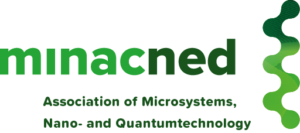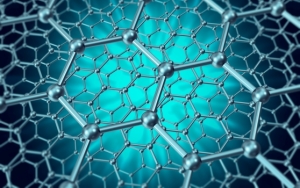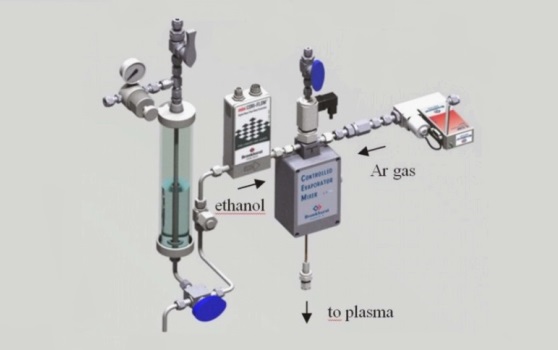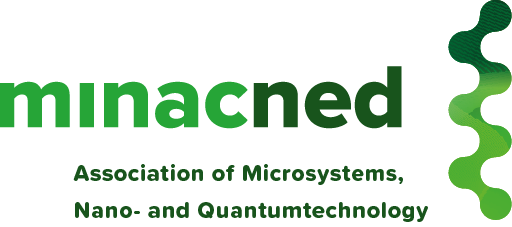Vandaag viert Surfix zijn 10e verjaardag! Surfix is opgericht als spin-off van Wageningen University. Onlangs heeft het bedrijf grote stappen gezet op weg naar volwassenheid.
Wageningen, Nederland, 1 april 2021
Tien jaar geleden erkenden de oprichters van Surfix dat controle van oppervlakte-eigenschappen een essentiële vereiste is voor succesvolle toepassing van micro- en nanotechnologie. En nog belangrijker, ze zagen ook de zakelijke mogelijkheid die dit vertegenwoordigde.
Han Zuilhof, oprichter van Surfix en hoogleraar Organische Chemie aan Wageningen University, zei: ”Gedurende 15 jaar onderzoek in mijn laboratorium hebben we een aantal patenten gepubliceerd over chemische oppervlaktemodificatie. Het starten van een bedrijf leek de beste manier om er iets uit te halen, en ik kende al de beste persoon om dit te doen: mijn voormalig promovendus Luc Scheres. Met Lionix en Aquamarijn vonden we investeerders die er niet alleen voor het geld in zaten, maar ook op andere manieren wilden bijdragen. Met deze combinatie van conceptuele innovatie, energieke drive en gedegen bedrijfservaring waren we klaar om te gaan! ”
Surfix is begonnen als leverancier van R & D-diensten op het gebied van nanocoatings. In het afgelopen decennium is Surfix gestaag gegroeid en heeft het op maat gemaakte nanocoatings ontwikkeld in een breed scala aan projecten voor klanten van alle soorten en maten. Geleidelijk ontstond er een focus op nanocoatings voor biosensoren en microfluïdische apparaten. In dit proces heeft Surfix ook zijn technologische basis versterkt en uitgebreid door verschillende nieuwe gepatenteerde nanocoatingprocessen te ontwikkelen.
De volgende belangrijke mijlpaal voor Surfix was de overname door de Nederlandse bedrijven Lionix International en Qurin Diagnostics in 2019, gevolgd door een extra investering van PhotonDelta in 2020. Surfix richt zich nu op het ontwikkelen en vermarkten van een diagnostisch platform op basis van een fotonische biochip.
CEO Maarten Buijs zei: “Surfix is begonnen met het ontwikkelen van nanocoatingprocessen, daarna overgestapt op nanocoating-verbeterde componenten, en maakt nu de volgende stap om deze componenten in een product te integreren. Het afgelopen jaar hebben we ons gericht op het worden van een diagnostisch bedrijf. Alles wijst erop dat de unieke mogelijkheden van Surfix op het gebied van fotonische biosensing een grootschalige toepassing van point-of-need diagnostiek op verschillende gebieden mogelijk zullen maken. De aanvankelijke doelgebieden zijn vroege diagnose van kanker, detectie van covid-19 en detectie van pathogenen in water voor aquacultuur ”.
CTO en oprichter Luc Scheres zei: “Ik ben erg blij en dankbaar om vandaag de tiende verjaardag van Surfix te vieren! We zouden deze mijlpaal niet hebben bereikt zonder het harde werk van onze medewerkers, het loyale vertrouwen van onze klanten en leveranciers en de liefdevolle steun van onze familie en goede vrienden. We hebben een lange weg afgelegd en ik kijk uit naar nog veel meer spannende ontwikkelingen bij Surfix in de komende jaren! ”
Neem contact op met info@surfix.nl voor meer informatie of kijk op www.surfix.nl.
Over Surfix
Surfix is in 2011 opgericht als spin-off van het laboratorium voor Organische Chemie van Wageningen University & Research en is in 2019 overgenomen door de Nederlandse bedrijven Qurin Diagnostics en Lionix International. Surfix kreeg in 2020 financiële steun van publiekprivate samenwerking PhotonDelta om verder te groeien zijn fotonica-bedrijf.
Volg ons op LinkedIn, Vimeo, Twitter of ga voor meer informatie naar https://www.surfix.nl
Alle hierin gebruikte handelsmerken zijn eigendom van hun respectievelijke eigenaren.



